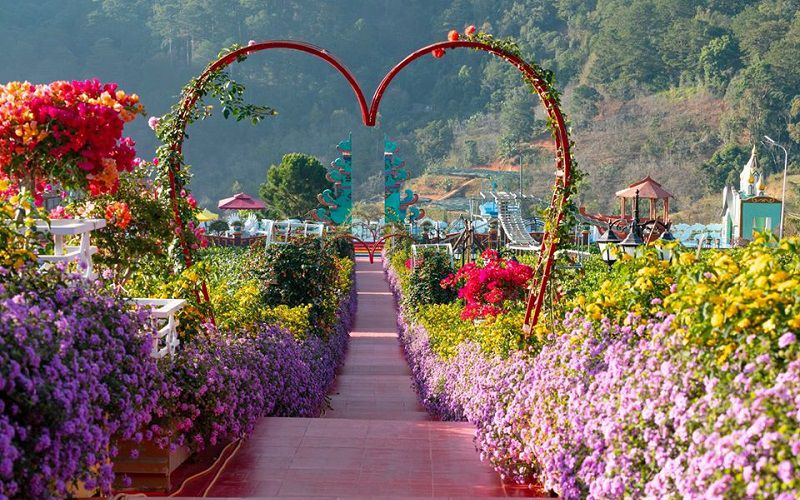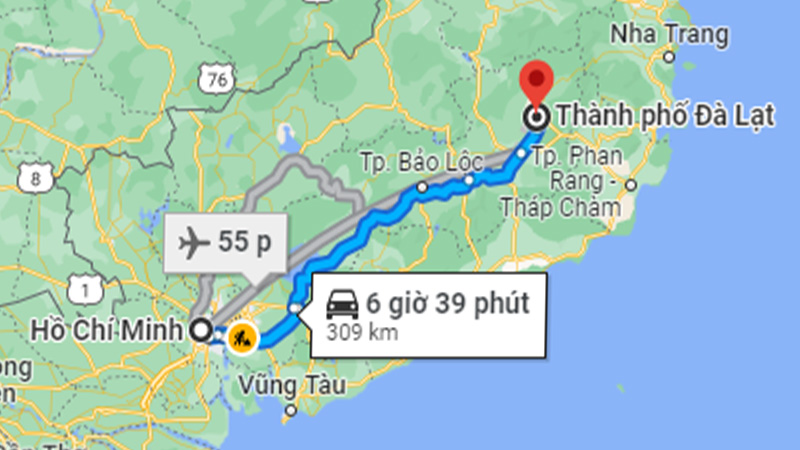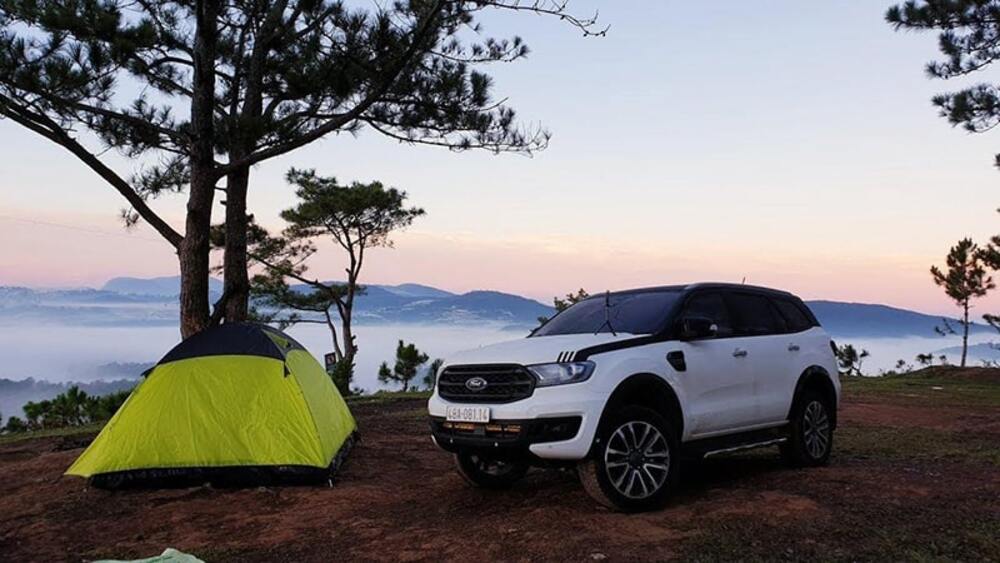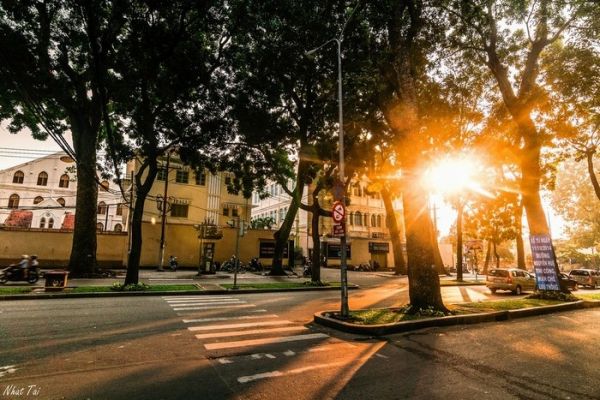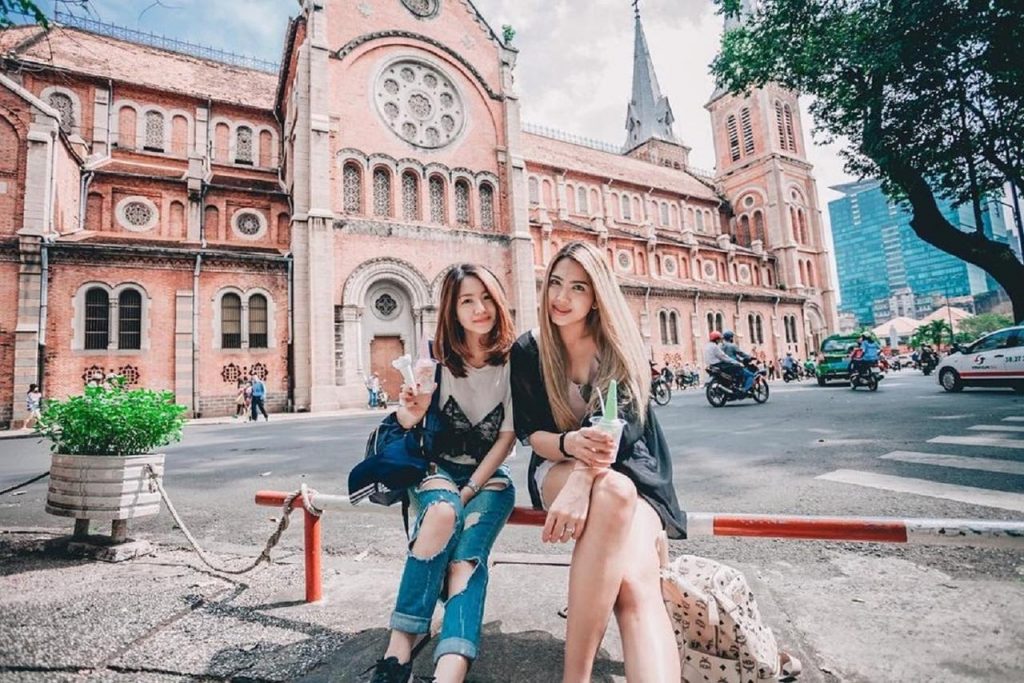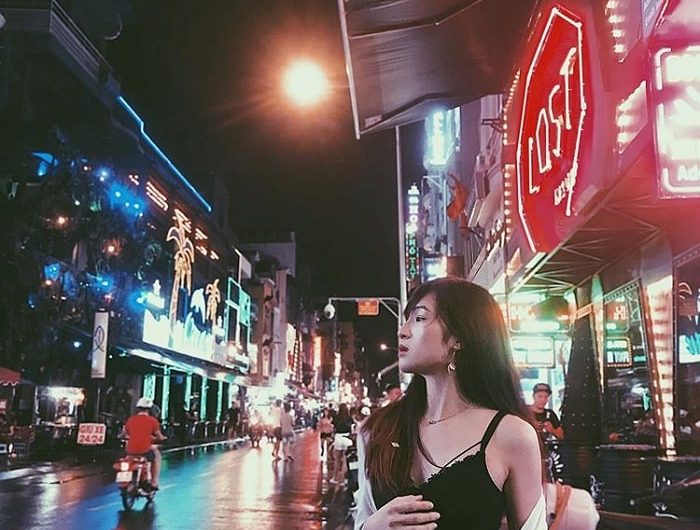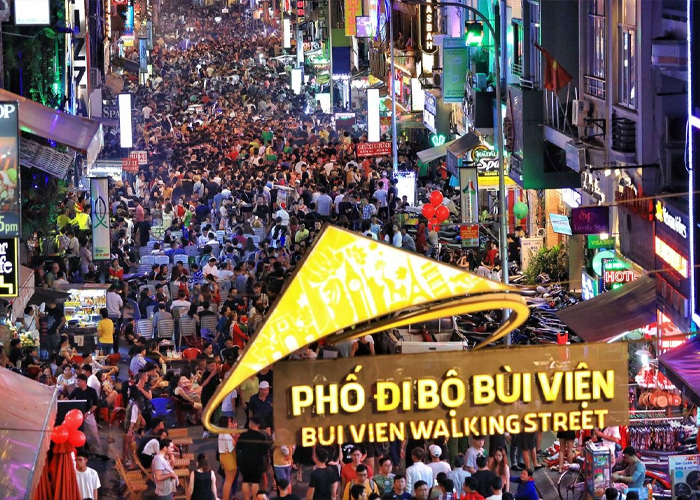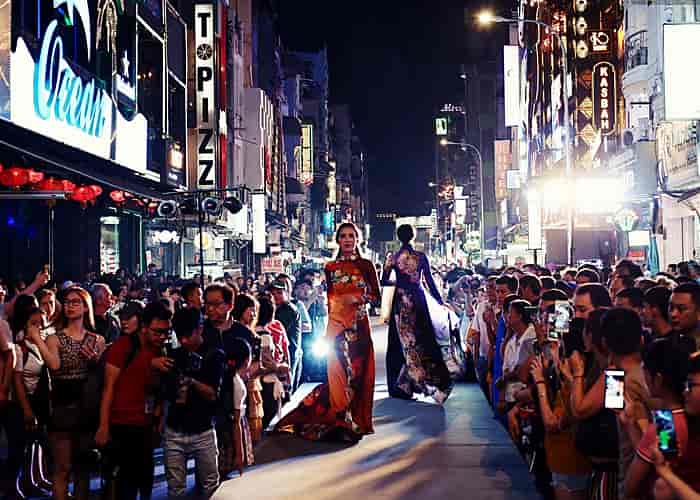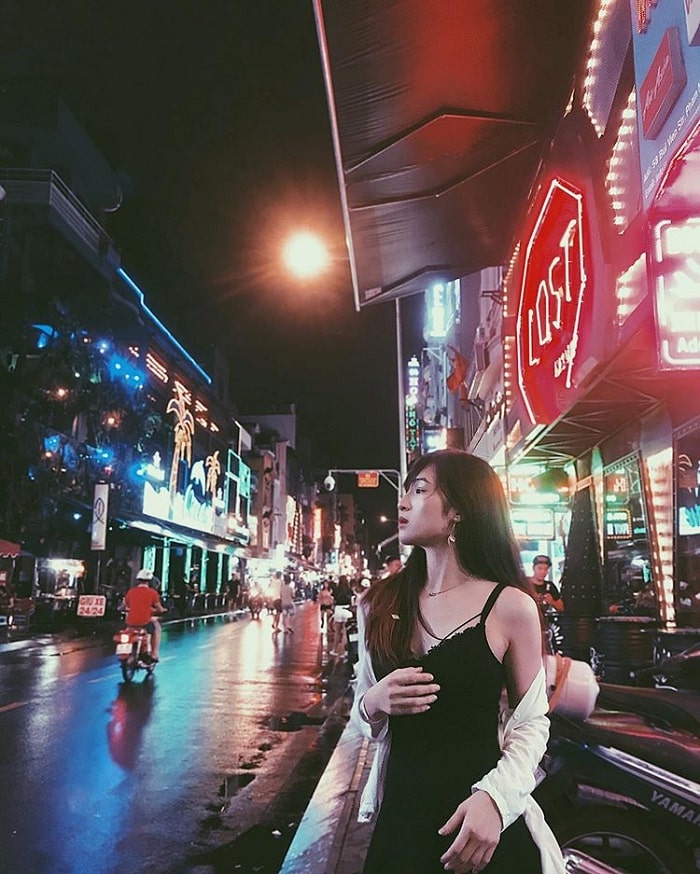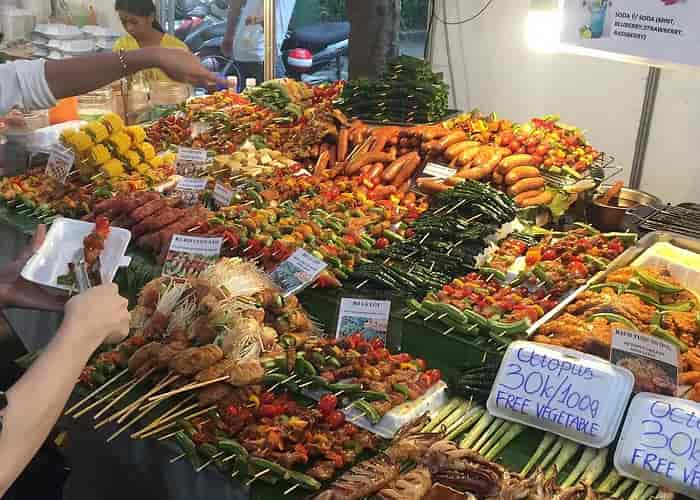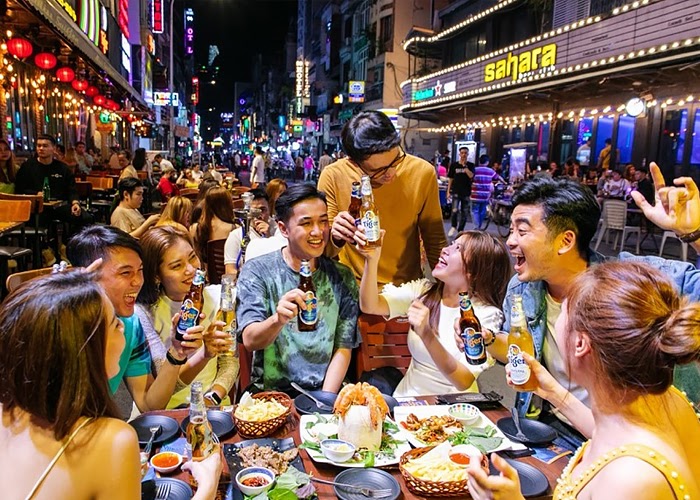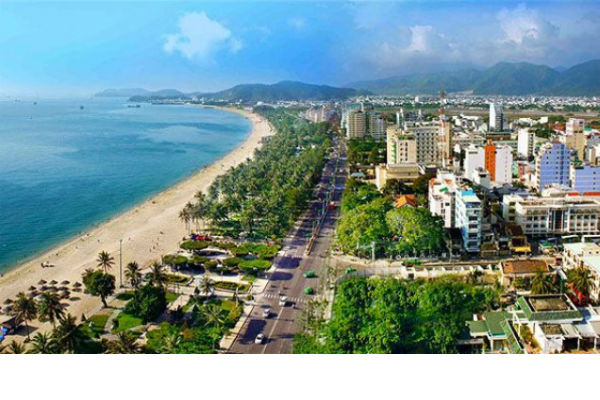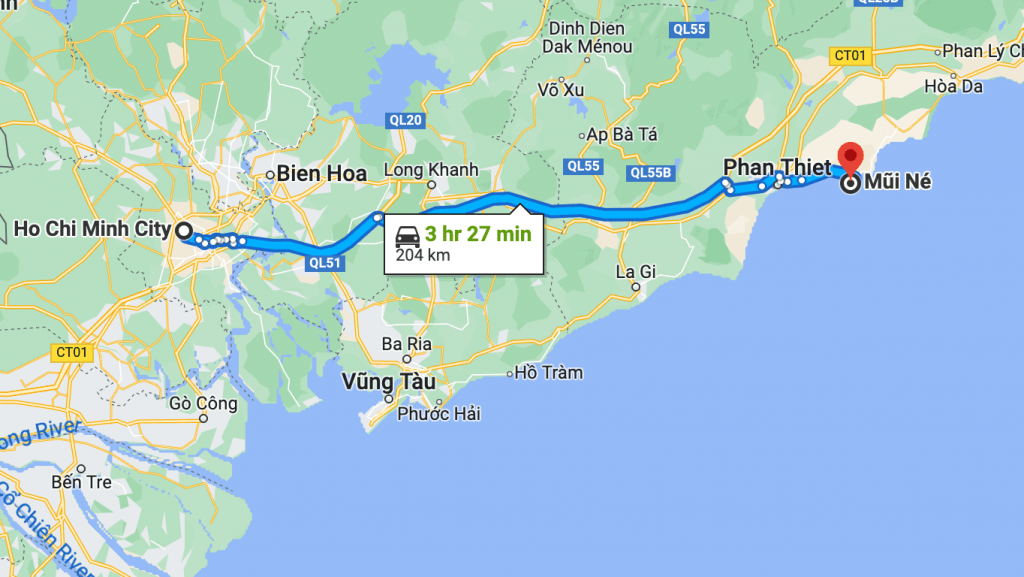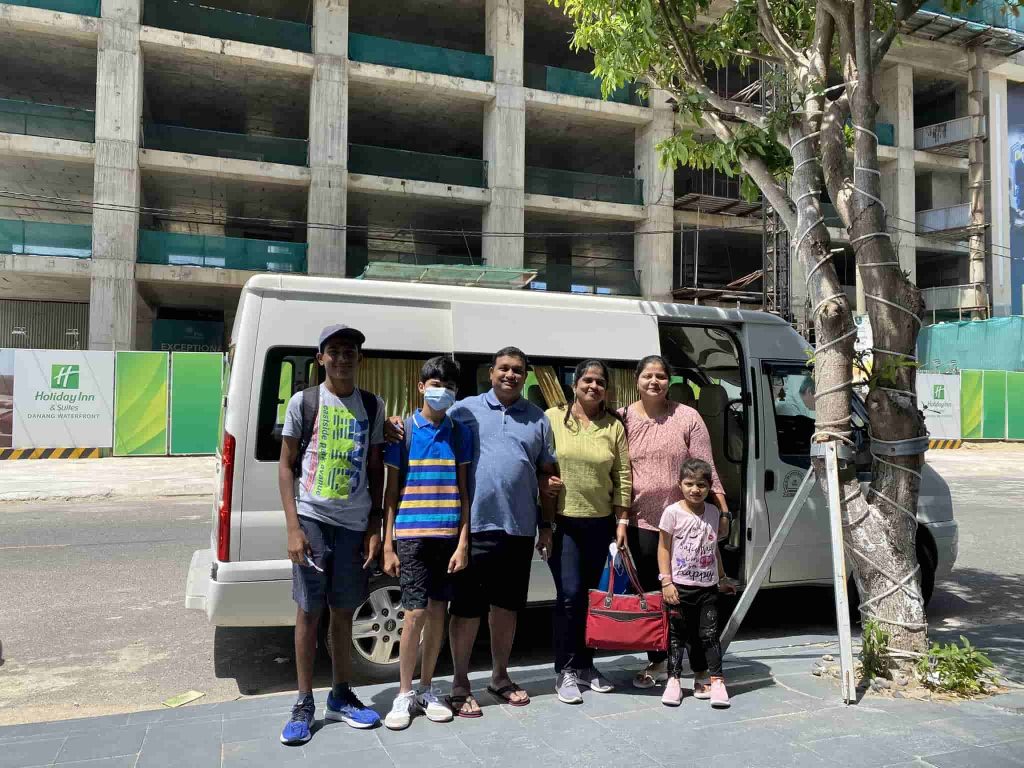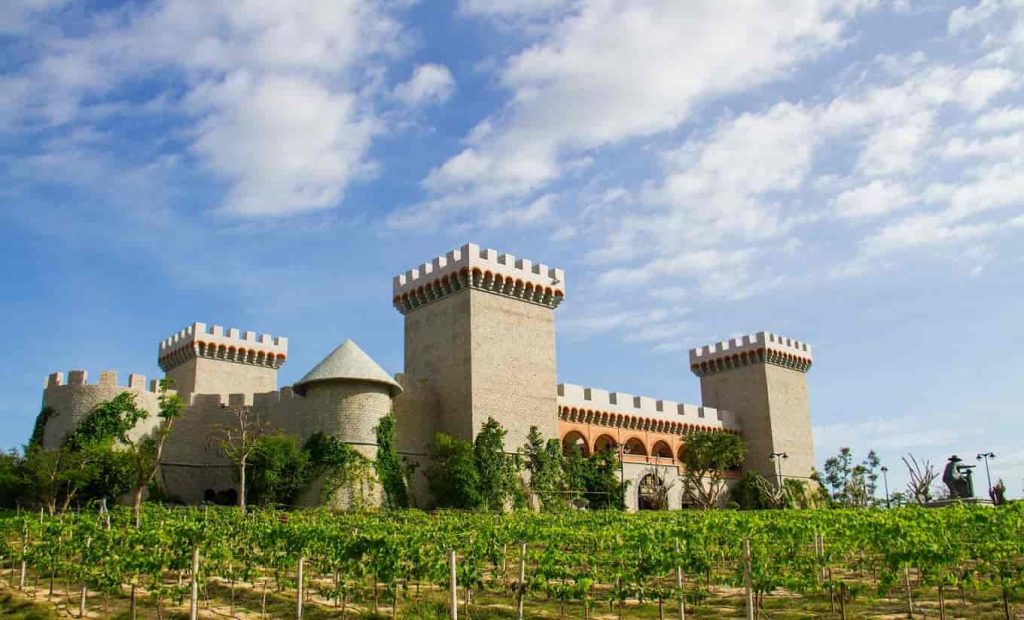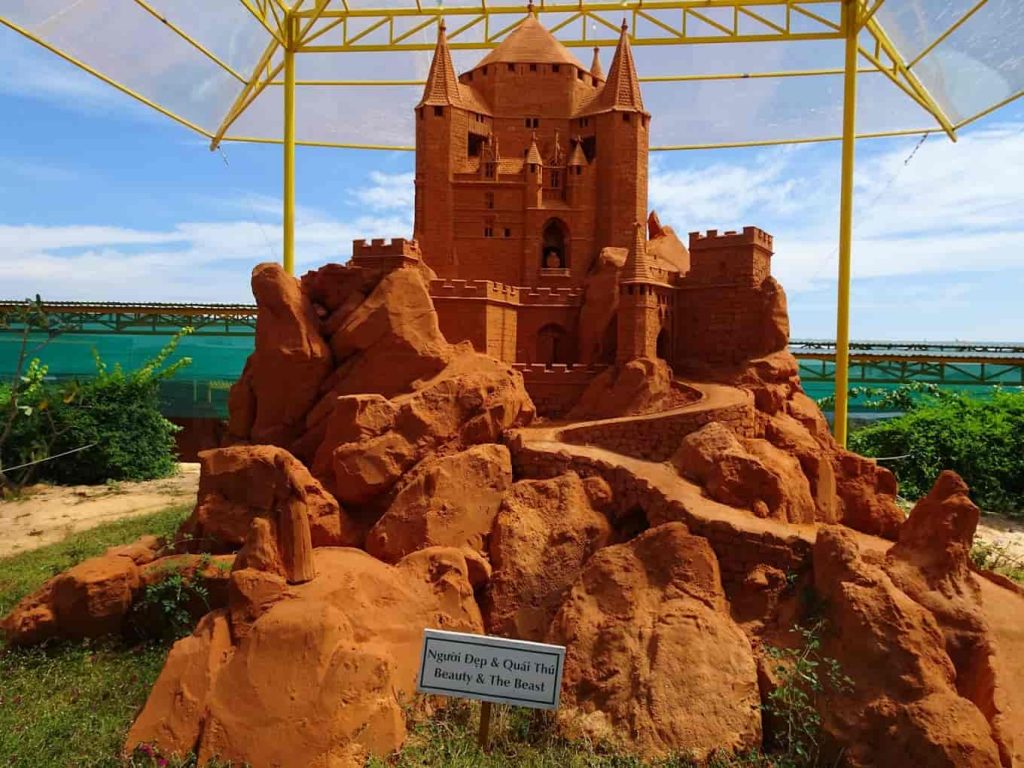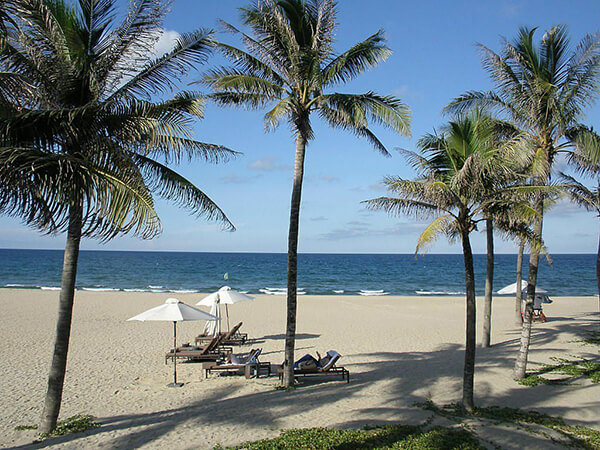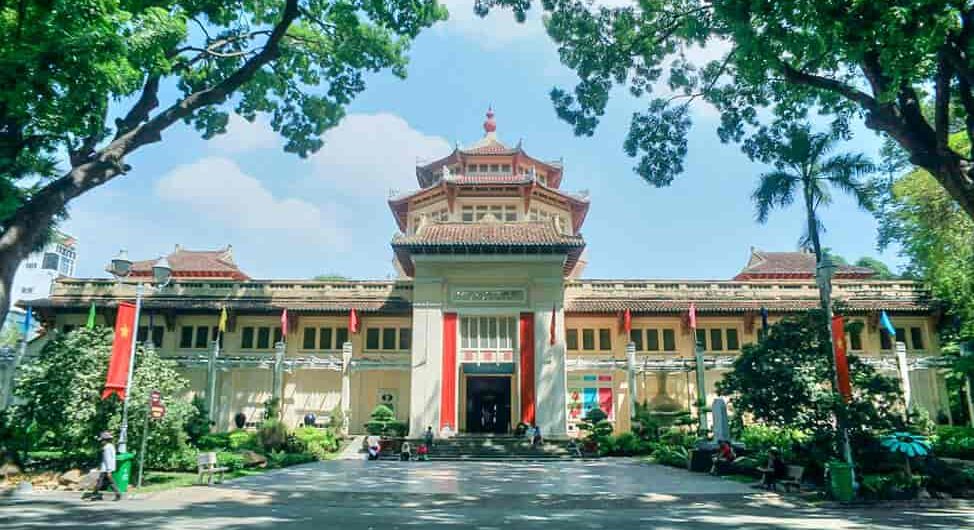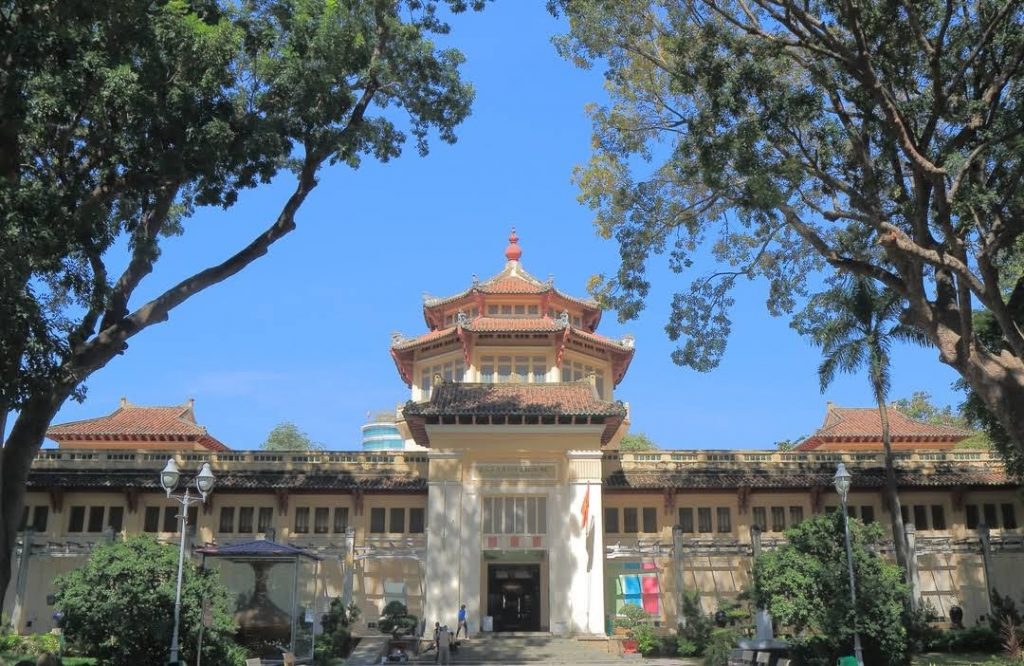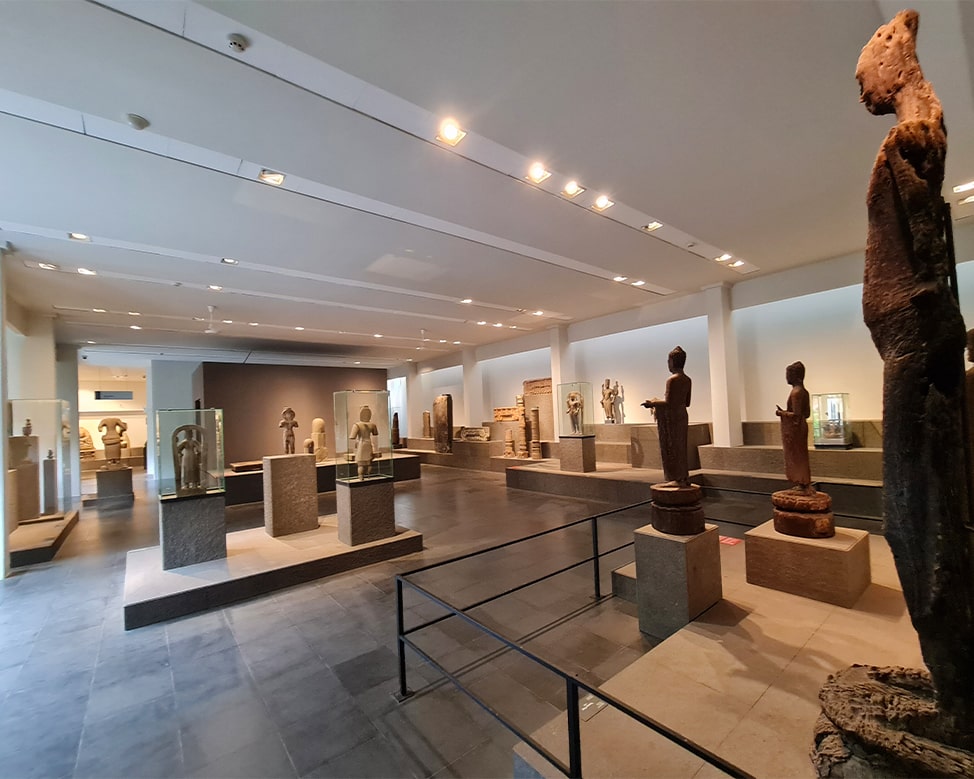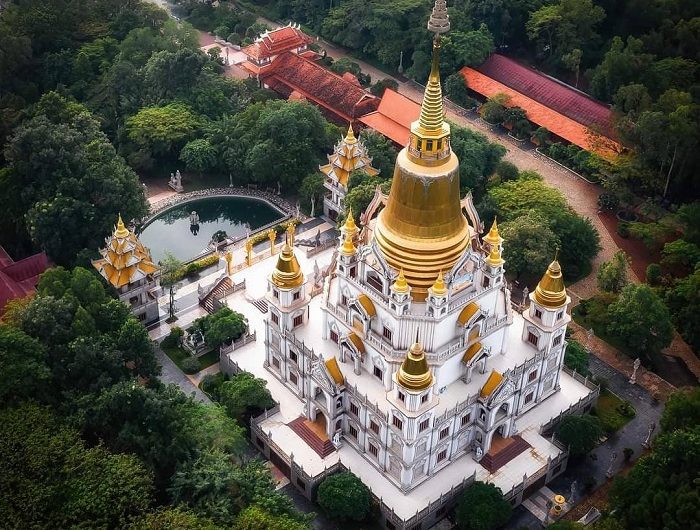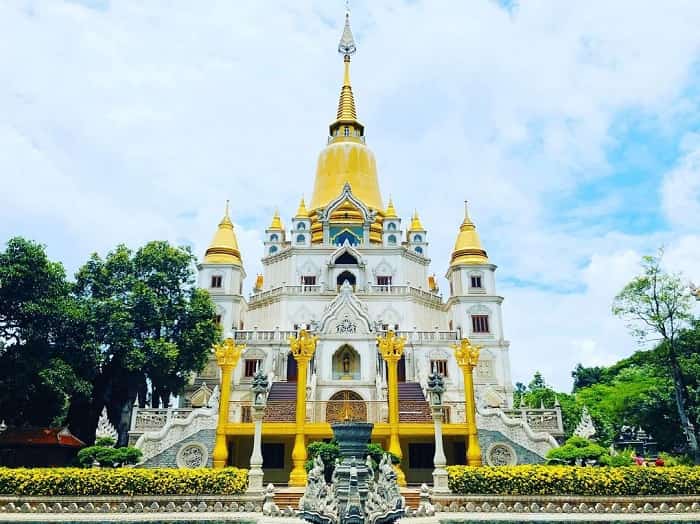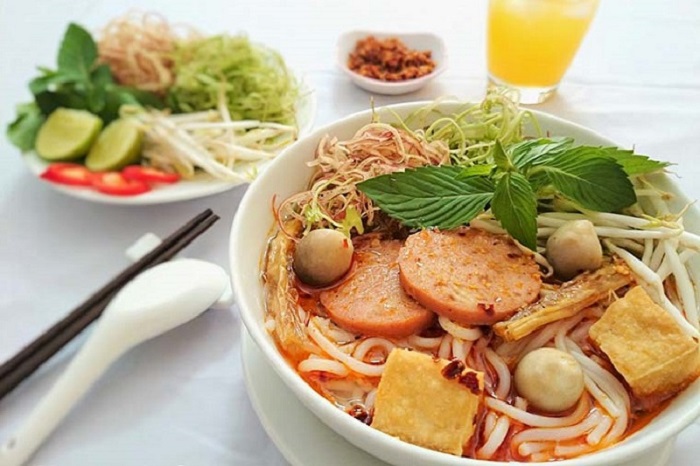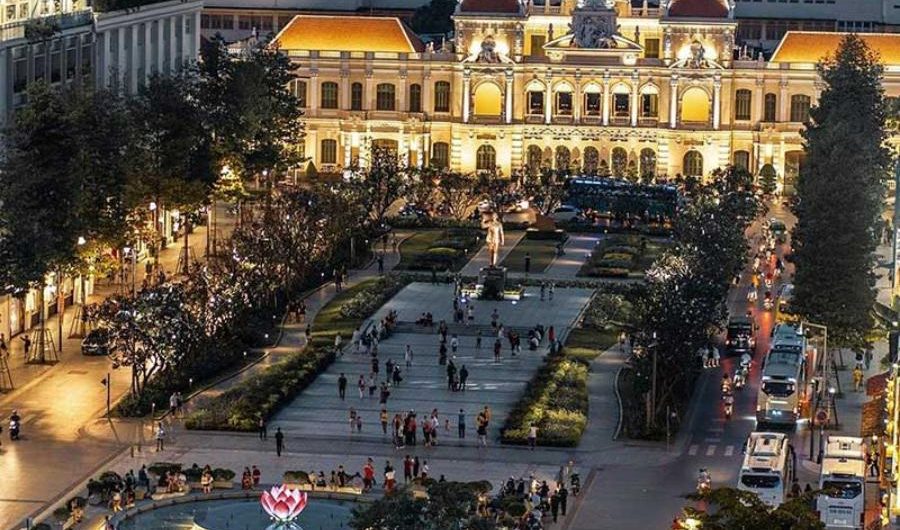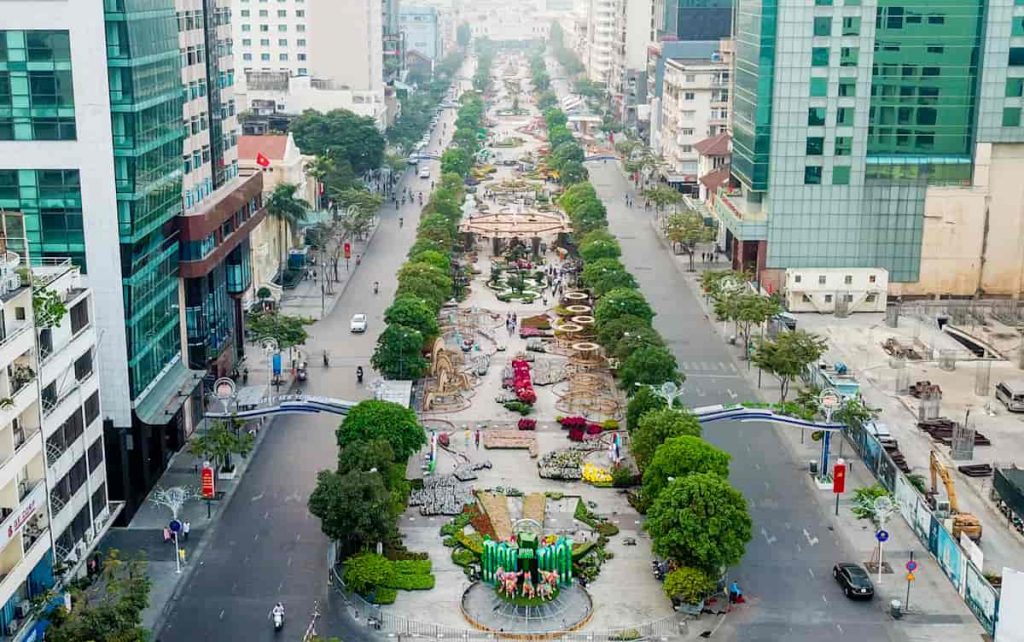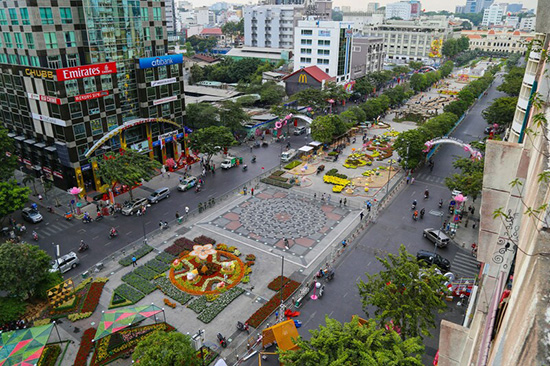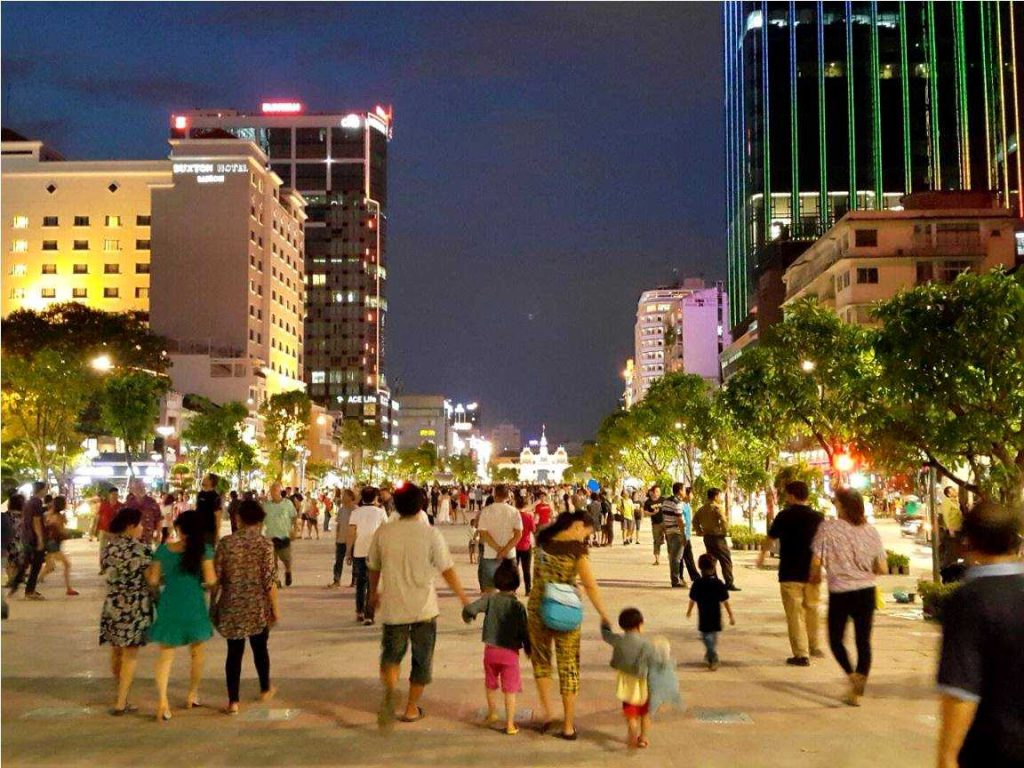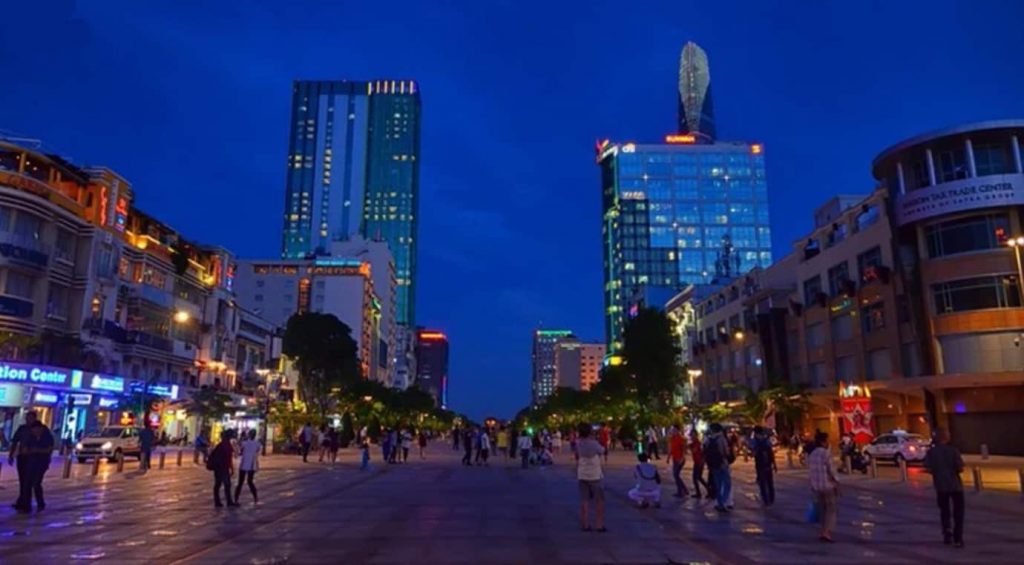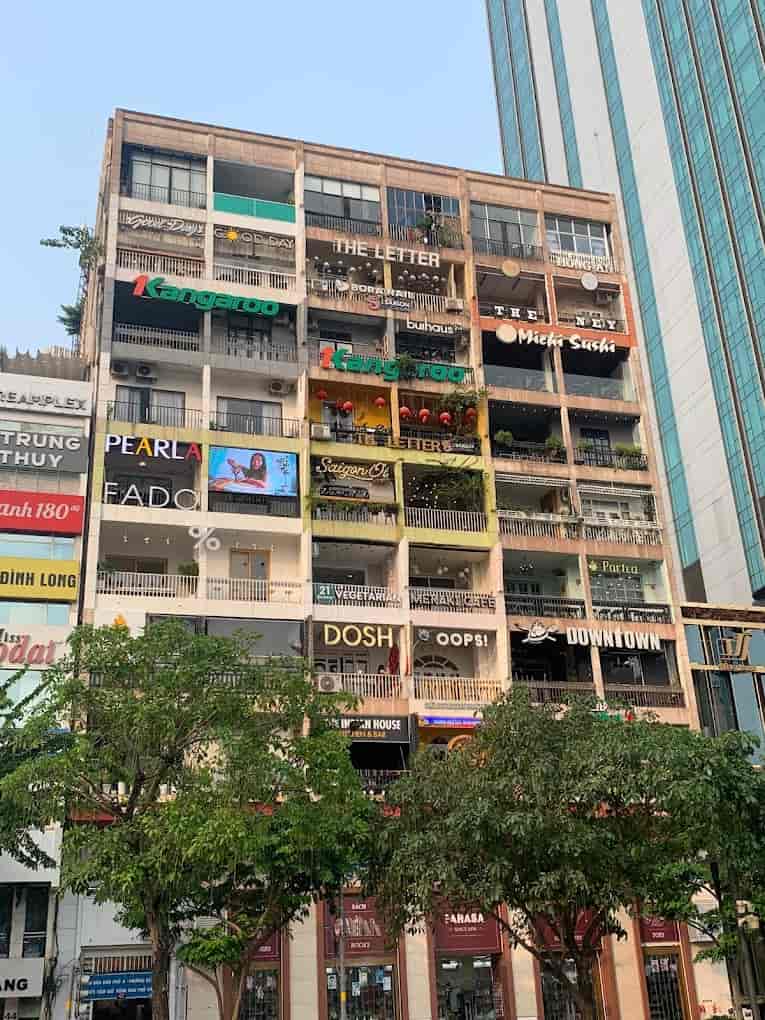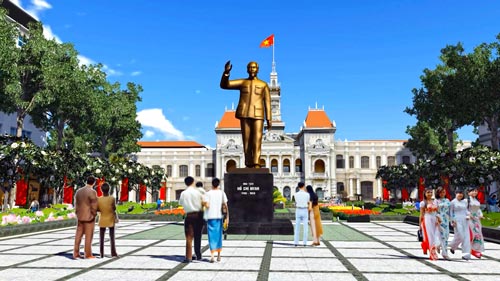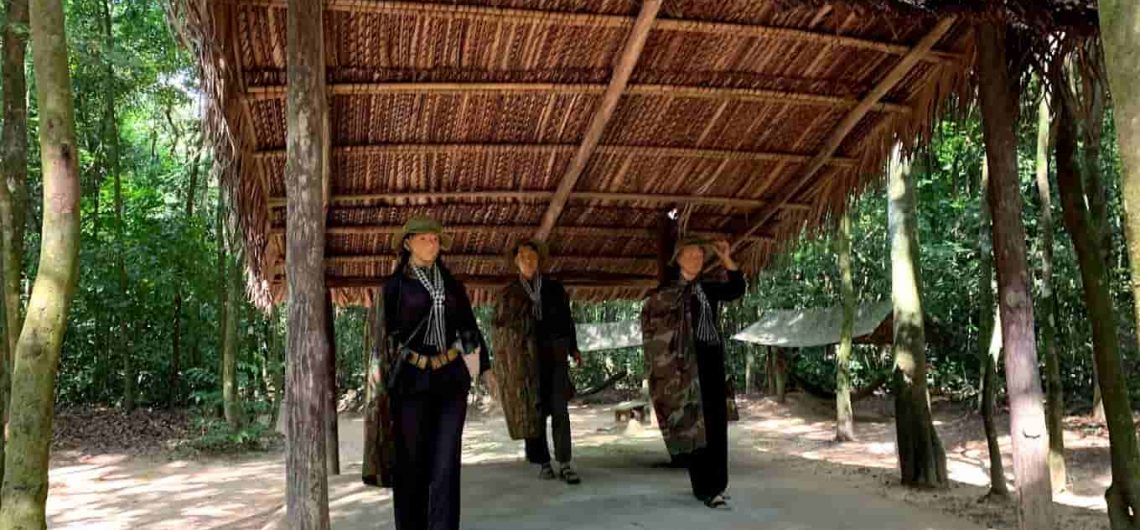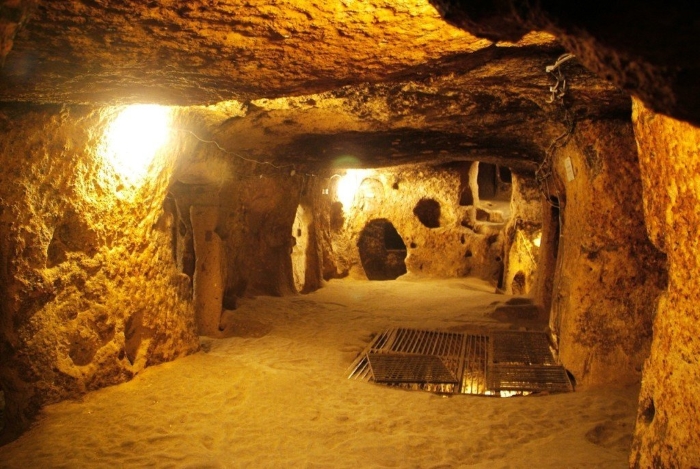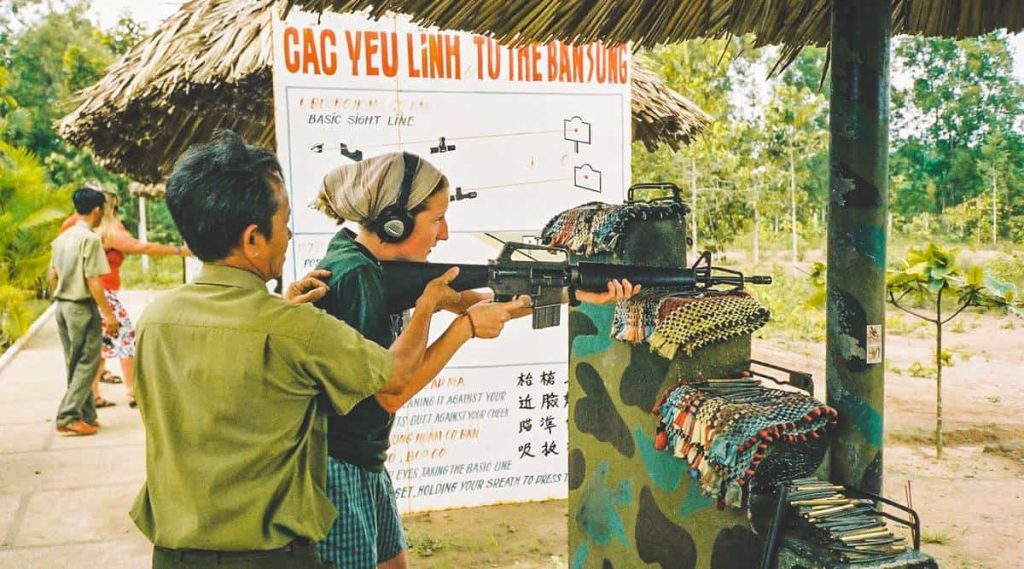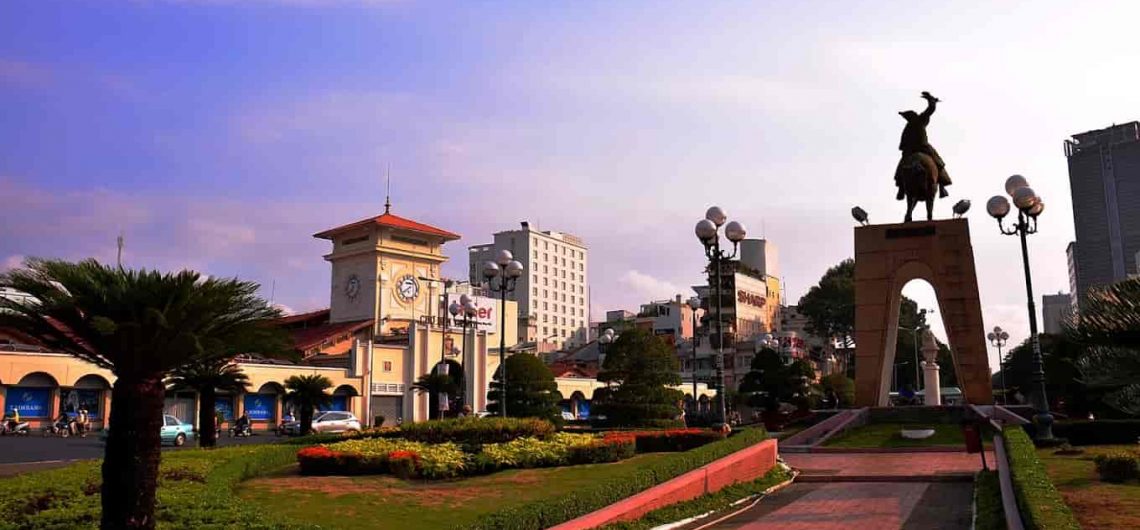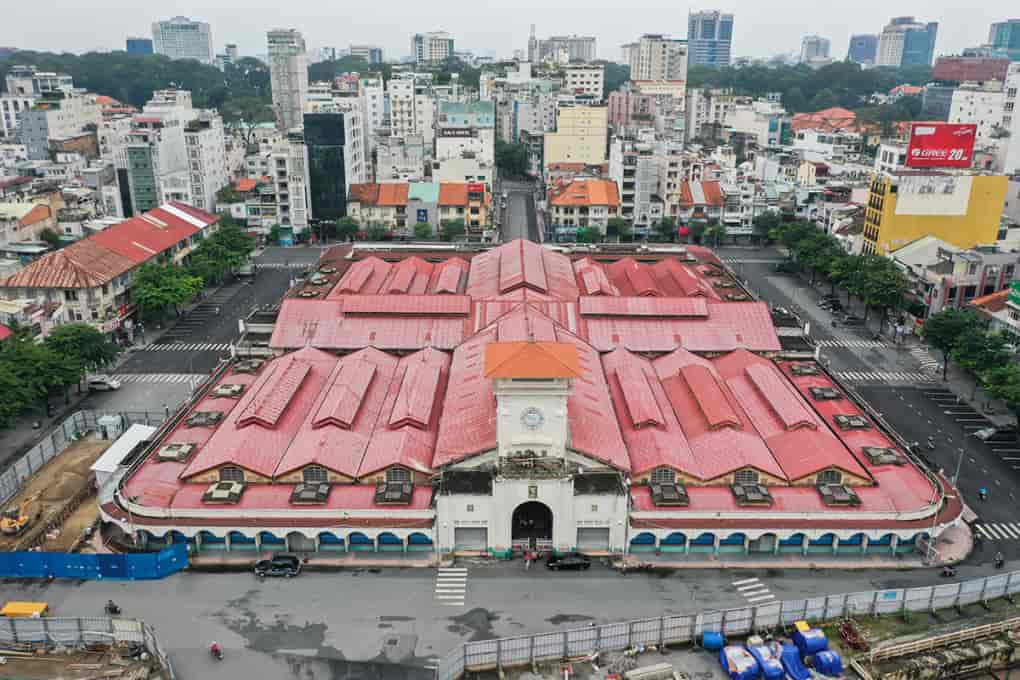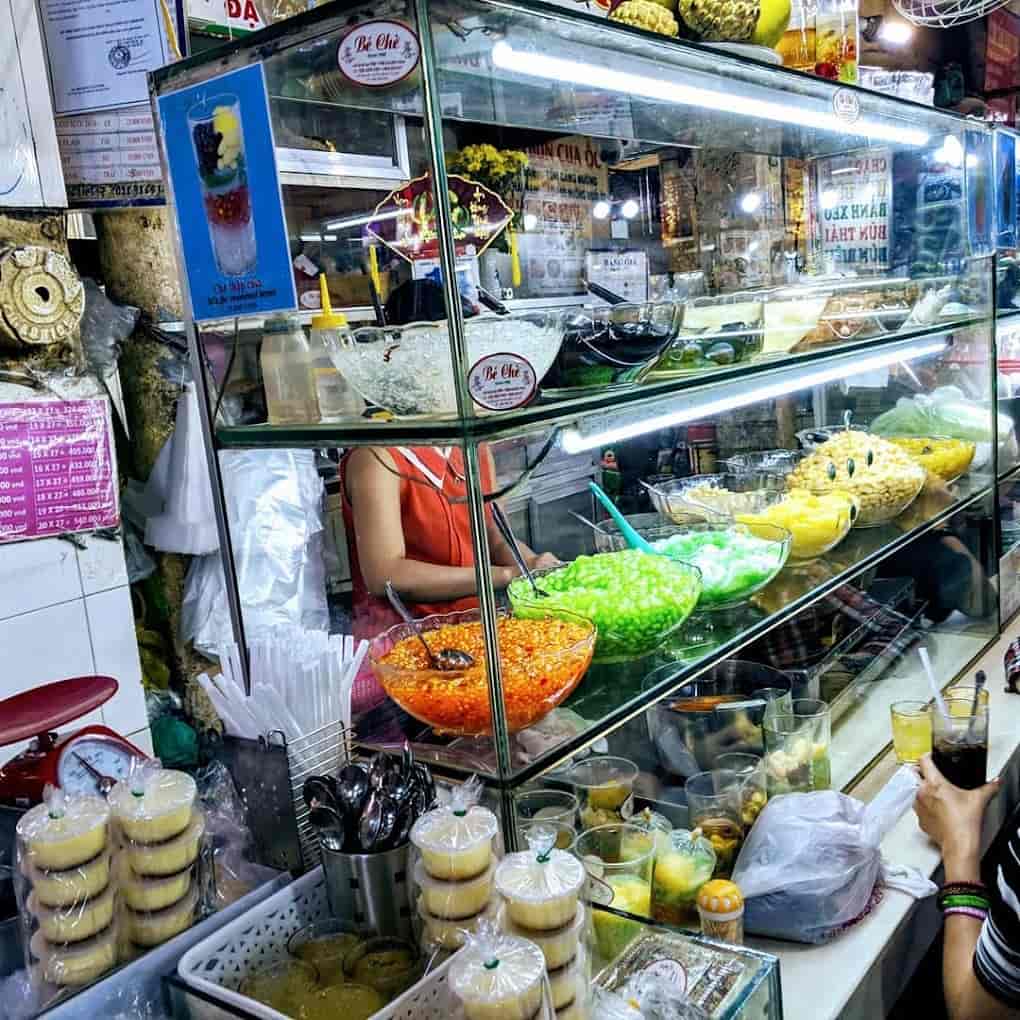When mentioning Ho Chi Minh City (Saigon), people immediately think of a bustling and lively city, even after nightfall. It is not only the largest economic center in the country but also known as the top entertainment paradise with a variety of options. After hearing us reveal a series of Ho Chi Minh City (Saigon) tourist destinations below, you will surely understand why it is so vibrant and makes everyone excited and curious.
Traveling in Saigon, where to go for fun | A compilation of the 25+ most worth-visiting tourist destinations in Saigon
Where to go for luxurious and vibrant experiences in Ho Chi Minh City? This might be a common question for many when planning to visit Saigon. Don’t worry, this city can meet your needs for both sightseeing and entertainment. DanangPrivateCar.com will introduce you to the following places to explore:
The Most Famous Tourist Destinations in Saigon.
Independence Palace
The first place to mention is Independence Palace, also known as the Reunification Palace, which is a testament to the historical transition between two regimes and is closely associated with the history of the Vietnamese nation. It used to be the workplace of the machinery of the government of the Republic of Vietnam and is also one of the national-level special historical relics.
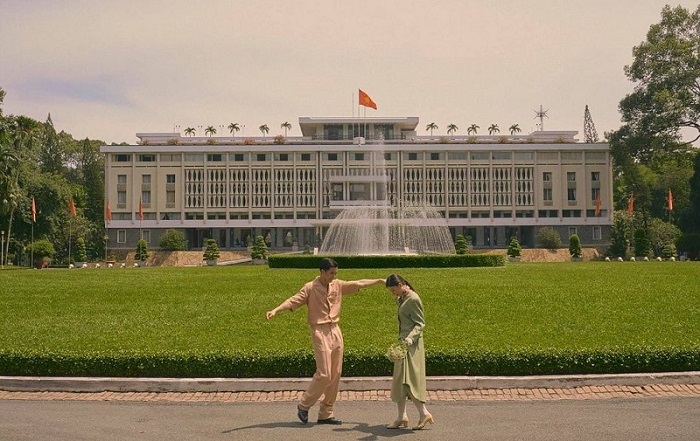
The construction is designed with a blend of Eastern architecture and Feng Shui elements, yet it’s also modern. Here, you can witness ancient artifacts and relics that mark the moment of independence. Especially on April 30th and September 2nd each year, Independence Palace attracts thousands of visitors from all over to come and explore.
- Address: 135 Nam Ky Khoi Nghia, District 1
- Opening Hours: 7:30 AM – 11:00 AM and 1:00 PM – 4:00 PM
- Ticket Price: 30,000 VND per person
Notre-Dame Cathedral of Saigon
Notre-Dame Cathedral of Saigon is one of the tourist destinations in Saigon District 1, considered a distinctive symbol of the city. Located in an ideal central location, this cathedral stands out with its European architecture, combining both Gothic and Roman styles, featuring red brick walls, vibrant stained glass windows, and the largest bells in Vietnam. The cathedral serves not only as the religious center of the Saigon diocese but also as a source of pride for the city’s residents. Furthermore, around the cathedral, you’ll find a culinary paradise with various delicious pastries, fried foods, and salads to savor.

- Address: 1 Paris Square, Ben Nghe Ward, District 1
- Opening Hours: 8:30 AM – 10:00 AM, 2:30 PM – 3:30 PM (Monday to Friday)
- Ticket Price: Free
You are planning a self-guided trip to Ho Chi Minh City and are looking for transportation. DanangPrivateCar.com’s private car service with a driver in Ho Chi Minh City will be of help to you. With a team of professional drivers and basic English, your journey will be more convenient. Moreover, with a private car, you can go anytime according to your schedule.
Ben Thanh Market
A renowned name in Saigon, Ben Thanh Market is located right in the city center, with four major roads converging at its corners. The market is both a bustling trading hub and a tourist attraction, especially for foreign visitors.

Here, you’ll find a wide variety of items that you can buy as gifts for your family and friends and enjoy traditional Vietnamese dishes like banh canh, banh beo, and banh chien xu. At night, the market comes alive with clothing stalls, souvenir shops, and busy food vendors. But a small tip: if you plan to shop, make sure to haggle for the best prices.
- Address: Located at the intersections of Phan Chau Trinh, Phan Boi Chau, Le Thanh Ton, and Quach Thi Trang Square, Ben Thanh Ward, District 1
- Opening Hours: 7:00 AM – 7:00 PM
- Ticket Price: Free
Saigon Central Post Office
Regarded as one of the finest architectural landmarks in Ho Chi Minh City, this place welcomes numerous visitors every day. The Saigon Central Post Office was built from 1886 to 1891 by a French architect and stands out with its brilliant yellow facade in the evening sunlight, arched windows, and a central clock with delicate decorative motifs. Inside, it is distinguished by a red pathway with a yellow star and designs resembling giant wine barrels, all of which captivate tourists from their very first visit.

- Address: 2 Cong Xa Paris, Ben Nghe Ward, District 1 (right next to Notre-Dame Cathedral Basilica)
- Opening Hours: 7:00 AM – 7:00 PM
- Ticket Price: Free
Ho Chi Minh History Museum
If you have a passion for culture and history, you can’t afford to miss the Ho Chi Minh History Museum. Its predecessor, the Blanchard de la Brosse Museum, was established in 1929. This museum allows you to explore and admire tens of thousands of valuable artifacts. Moreover, it houses over 25,000 rare books, documents, and well-preserved specimens related to the fields of archaeology and history, sparking the curiosity of many.

- Address: 2 Nguyen Binh Khiem, Ben Nghe Ward, District 1
- Opening Hours: 8:00 AM – 11:30 AM, 1:30 PM – 4:30 PM every day except Monday
- Ticket Price: 15,000 VND per person
Ho Chi Minh Museum at Nha Rong Port
Nha Rong, the place where the image of the nation’s revered father embarking on his quest to save the country is etched, serves as a testament to the two great resistance wars against the French and the Americans. It’s a must-visit destination in Saigon. Currently, thousands of artifacts and documents related to the history and revolutionary activities of Uncle Ho are on display here, both indoors and outdoors. Through exploring the museum, visitors can gain a better understanding of the nation’s history, Bác’s dedication to the country and its people, and, as a result, develop a deeper sense of appreciation for his contributions.
South Vietnamese Women Museum
The predecessor of the South Vietnamese Women Museum is the Traditional Southern Women’s House, built to preserve and educate about the love for the country and the good traditions of Vietnamese women for future generations. The museum currently manages a library with nearly 10,000 books, an exhibition area covering 3,162 square meters with three floors and eight rooms showcasing exhibits, images, and documents on various themes: women’s movements, women’s traditions, Ho Chi Minh Commemoration, Vietnamese women’s clothing and jewelry, Vietnamese women in family life, traditional festival costumes of women from various ethnic groups in the South, and much more for you to explore and learn from.
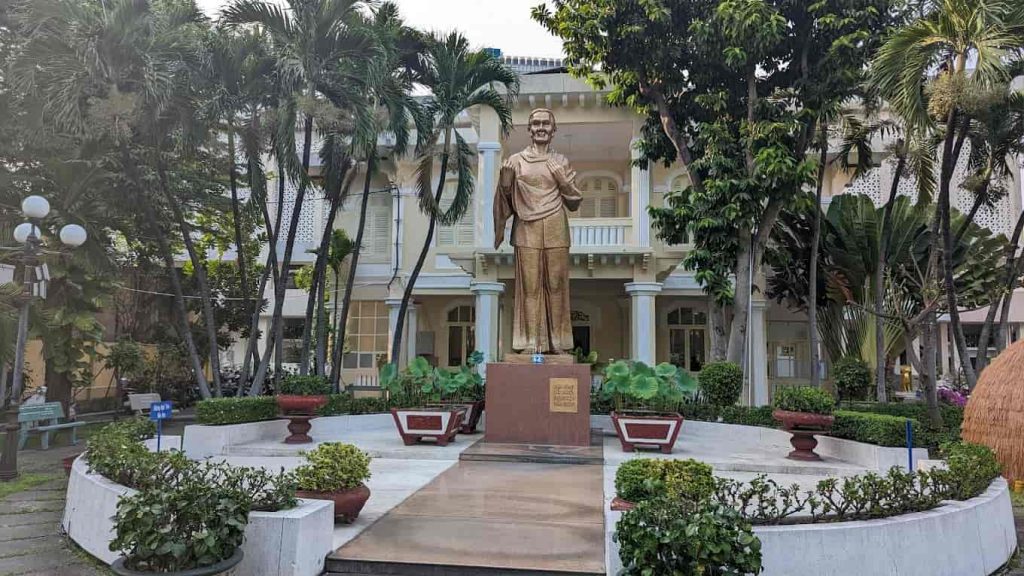
- Address: 202 Vo Thi Sau, Ward 7, District 3
- Opening Hours: 8:00 AM – 11:30 AM and 1:30 PM – 5:30 PM
- Ticket Price: 30,000 VND per adult
Ho Chi Minh City Opera House
The Ho Chi Minh City Opera House, also known as the City Theatre, is conveniently located near the city center. It is considered a significant cultural landmark and one of the most expensive French colonial-era projects in Saigon. Construction began in January 1900, with a major renovation in 1998. Currently, the theater hosts stage performances and major events. Young people often gather on the steps outside, observing the bustling crowds and enjoying a refreshing glass of iced tea.
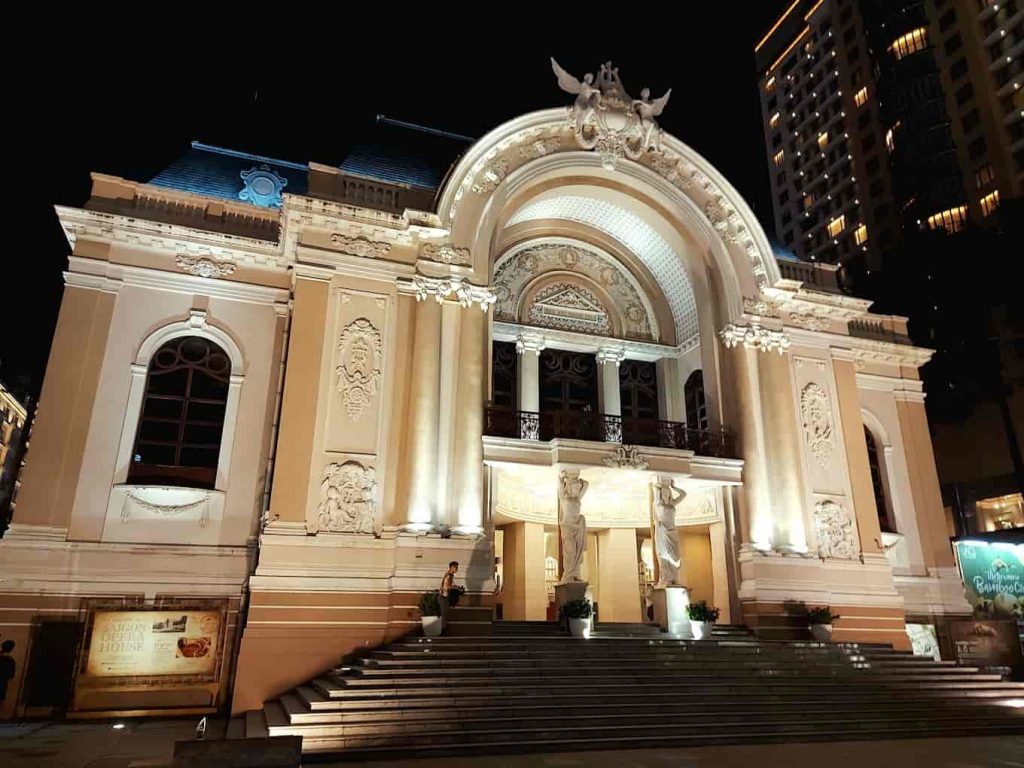
This is also one of the most impressive landmarks in Saigon.
- Address: Lam Son Square, District 1, Ho Chi Minh City
Book the Tan Son Nhat Airport transfer service to the city center with DanangPrivateCar.com’s right now. We guarantee fast, punctual, and affordable service. Your driver, holding a sign with your name, will meet you at the airport gate, so you don’t have to worry about finding public transportation, which can be challenging in Vietnam.
Must-Visit Night Tourist Spots in Ho Chi Minh City
Nguyen Hue Pedestrian Street
Nguyen Hue Pedestrian Street is a popular nighttime tourist destination in Saigon, especially among the younger crowd. This street was built in April 2005, measuring 670 meters long and 64 meters wide, paved with granite stones and featuring two large fountains. Surrounding the area are trees, electric lights, sound systems, making it a dazzling place. People and tourists come here for a leisurely stroll, immersing themselves in the lively atmosphere. Furthermore, on weekends, there are often exciting music exchange programs featuring young talents.
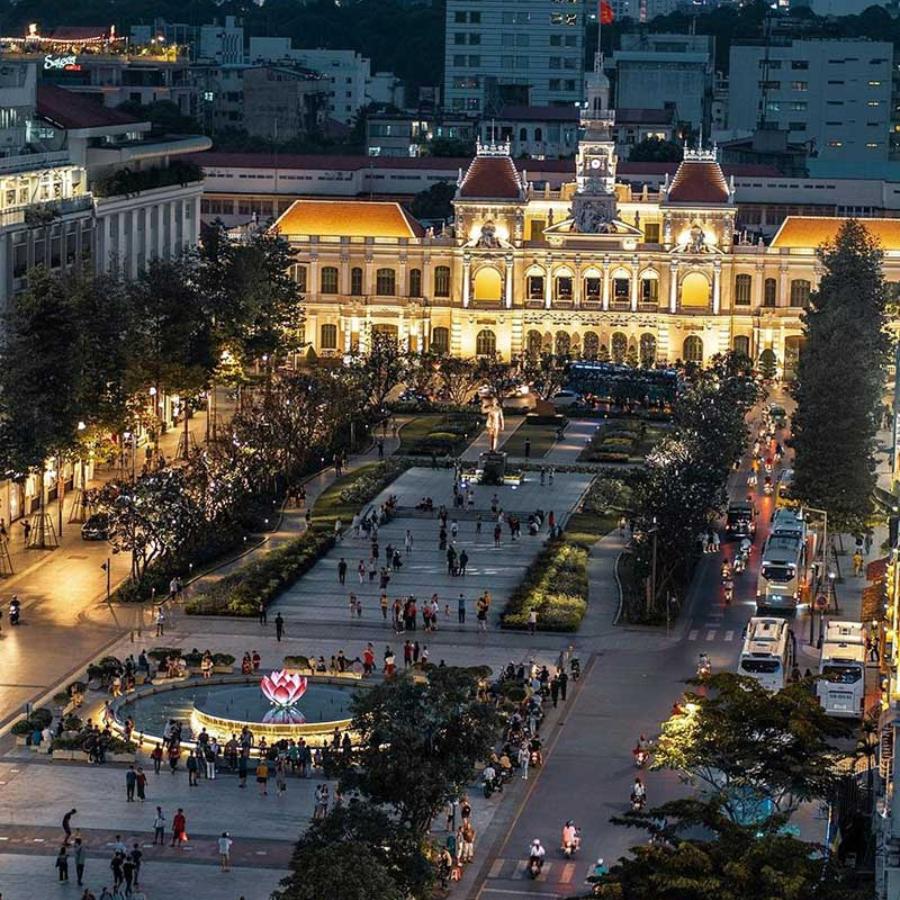
- Address: Nguyen Hue Street, District 1, Ho Chi Minh City
- Opening Hours: 24/7
Bui Vien Street
If Hanoi has Ta Hien Beer Street, then Ho Chi Minh City has Bui Vien Street. That’s why if you’re wandering through this city, you must visit here. Bui Vien Street is an incredibly appealing destination with a variety of entertainment and unique street food. Live music performances, pubs, bars, and more create a lively and enticing atmosphere. Perhaps this is one of the best places to fully experience the spirit of a city that many still call the “city that never sleeps.” However, Bui Vien Street is only open to serve locals and tourists on the last two days of the week!
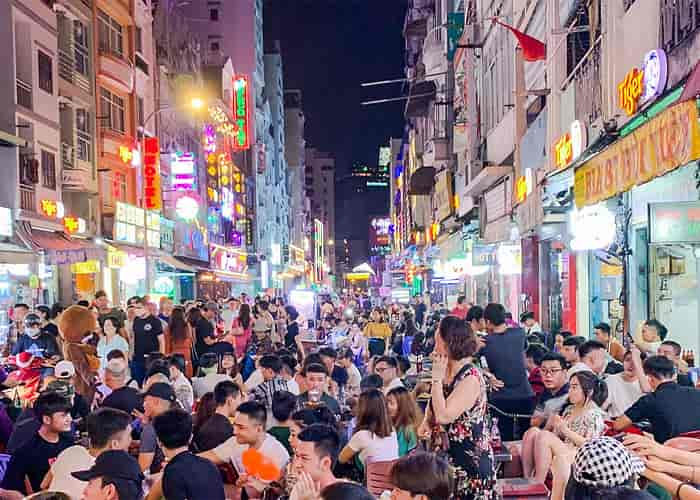
- Address: Bui Vien – Pham Ngu Lao – De Tham, District 1.
Starlight Bridge, Ho Chi Minh City.
Starlight Bridge is perhaps one of the most famous tourist spots in Ho Chi Minh City, renowned as the most beautiful pedestrian bridge in the city. The bridge connects the Crescent Lake and the canal in the Phu My Hung urban area. It is designed with a system of seven-color LED lights and water fountains on both sides, creating a feeling as if you are walking on a galaxy. Standing on the bridge for sightseeing or relaxation is truly marvelous. Moreover, at both ends of the bridge, there are spacious green squares with stone benches, providing an ideal entertainment space.
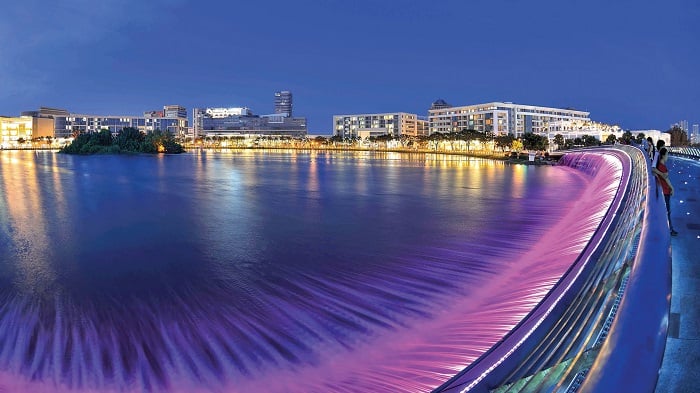
- Address: Ton Dat Tien, Phu My Hung, District 7
- Opening Hours: All day
- Ticket Price: Free
Entertainment and Recreation Tourist Destinations in Ho Chi Minh City
Suoi Tien Amusement Park.
This is a united entertainment complex that combines various cultural elements. It features many reconstructed cultural stories such as Lac Long Quan – Au Co, Son Tinh – Thuy Tinh, Hung Kings, Chung cakes, and rice cakes. Particularly noteworthy is the Tien Dong beach, the first artificial beach in Vietnam. Since its establishment, this destination has continued to attract a wide range of visitors, especially during holidays and weekends.
With just one ticket, you can freely explore the historical structures, watch parades, witness the convergence of four spirits, enjoy a variety of musical performances, and experience thrilling activities like intergalactic spaceship battles, high-speed car racing, 4D and 9D movies, laser tag, and explore the Phoenix Fairy, snow castle, magic castle, and many other adrenaline-pumping games. The park also has rides suitable for children of all ages.
- Address: 120 Hanoi Highway, Tan Phu Ward, District 9
- Ticket Prices: 120k/adult, 60k/children from 1-1m4, free for children under 1m
Dam Sen Amusement Park.
If you’re looking for a weekend getaway without traveling far, Saigon’s Dam Sen Park is a perfect choice for you. This park, covering over 50 hectares, is divided into the water park and the cultural park. It’s considered a paradise for entertainment, offering numerous exciting activities that are rare to find in Saigon.
At the water park, you’ll immediately feel like you’re in a refreshing oasis with 36 modern underwater games, a large wave pool, and a promise of a truly relaxing experience for you and your family. The cultural park, or Dam Sen Dry Park, features various games on land, ranging from thrilling to gentle, including duck races, suitable for both adults and children.
- Address: 3 Hoa Binh, Ward 3, District 11, Ho Chi Minh City
- Ticket Prices for Dam Sen Dry Park: 100,000 VND/adult, 60,000VND/children, all-inclusive package 240,000 VND/adult, 150k/children
- Ticket Prices for Dam Sen Water Park: 180,000 VND/adult, 100,000 VND/children, free for children under 1m
White Rabbit Park.
This is an attractive tourist destination in Saigon for children and young people. At White Rabbit Park, you can experience vibrant feelings by watching 5D movies and enjoying rides, including fast roller coasters, flying saucers, Pirates of the Caribbean, and many other exciting adventures. You can also ride on beautiful decorated horses, float freely in the air, and immerse yourself in fairy tales with fun music, creating a festive atmosphere.
- Address: 875 Cach Mang Thang Tam, Ward 15, District 10, Ho Chi Minh City
- Opening Hours: 6:00 AM – 11:00 PM
- Entrance Fee: Free; an all-inclusive pass for games costs 240,000 VND
Lego Water Park.
You don’t need to travel to the United States, the UK, or Germany to explore the fascinating world of Lego. In Ho Chi Minh City, you can find Lego Water Park, the first Lego-themed water park in Vietnam. There are many unique attractions here that will delight you.
First, there’s an impressive artificial waterfall where you can immerse yourself under a cascading waterfall and take great photos. Next to that, you’ll find giant dinosaurs, thrilling waterslides, and a variety of attractions for both adults and children.
The park features two overflowing swimming pools, a wave pool, and crystal-clear water for you to enjoy swimming and frolicking. Inside, there’s also an indoor Lego world that will captivate many young visitors. The park offers a wide range of games that appeal to many young people.
- Address: The BCR tourist area, District 9
- Ticket Prices: 120,000 CND/adult, 150,000 VND/children
Sky Park at SC Vivo City.
SC Vivo City houses the first rooftop outdoor park in Vietnam, known as Sky Park. The park is divided into two areas: Vivo Playground and a 3D wall painting area with various games for children to play and climb around. The Apple Kids Club on the lower floor also features a wide variety of fun and diverse games. You can play, visit, and shop to your heart’s content, and the dining area also has numerous famous restaurants for you to enjoy.
- Address: 5th floor, SC Vivo City, 1058 Nguyen Van Linh, Tan Phong, District 7
Saigon Zoo and Botanical Gardens.
Located in the city center, at the end of Le Duan Street, Saigon Zoo and Botanical Gardens, also known as the zoo, is one of the must-visit tourist destinations in Saigon for children. With over 1,000 animals from all over the world and more than 2,000 trees and flowers, as well as a play area with dozens of games such as electric cars, airplanes, animal riding, fishing, carousel, train rides, and more, it’s an ideal place for kids to both learn and have fun. Moreover, the spacious green space also helps you escape from the heat of the South. This is why Thao Cam Vien welcomes over 2 million visitors every year.
- Address: 2 Nguyen Binh Khiem Street, Ben Nghe Ward, District 1, Ho Chi Minh City.
Suggesting off-center tourist destinations in Ho Chi Minh City for those who enjoy exploration
Buu Long Pagoda
Another beautiful Ho Chi Minh City tourist destination that many people, especially pilgrims, should not miss is to admire Buu Long Pagoda with extremely grand architecture but no less sacred. The temple is located about 25 km from the city center, established since 1942, and was invested and restored in 2007 in a combination of Thai, Indian culture, and the architecture of the Nguyen Dynasty.

The overall temple looks like a palace with white as the main color, with green accents on the roof, resembling the architecture of temples in the land of golden temples. Other details are also displayed and designed very delicately and uniquely. This is why many people call it the Thai Temple. With its location in the middle of a cool, tree-covered hill, visitors come to the temple not only for pilgrimage and meditation but also for sightseeing and taking “Instagrammable” photos.
- Address: 81 Nguyen Xien, Long Binh, District 9
Can Gio Mangrove Biosphere Reserve
Can Gio is a coastal district of Ho Chi Minh City and the only place in this city with a beach. Not only does it have a beach, but there are also mangrove forests and a group of islands with various interesting activities. When you visit Can Gio on weekends or holidays, you can get away from the hustle and bustle of the crowded urban area to immerse yourself in the cool sea, enjoy a serene and idyllic natural environment, and savor fresh and delicious seafood. This destination is about 50 km away from Saigon, so you can make it a day trip. However, if you have more time, it’s recommended to spend two days to explore the entire coastal district, including places like Monkey Island, Vam Sat Ecotourism Area, and Thanh An Island.
Cu Chi Tunnels
Previously, the Cu Chi Tunnels were a resistance base, a defensive system underground built by our troops and people during the Indochina War and the Vietnam War. Cu Chi is often referred to as the “city beneath the ground” because it not only has an extensive tunnel system like a maze but also has many rooms, storage areas, kitchens, infirmaries, workrooms, etc. Nowadays, it is not only a national-level historical relic but also a famous daytime tourist destination in Saigon, attracting about 20 million visitors from both domestic and foreign countries every year.
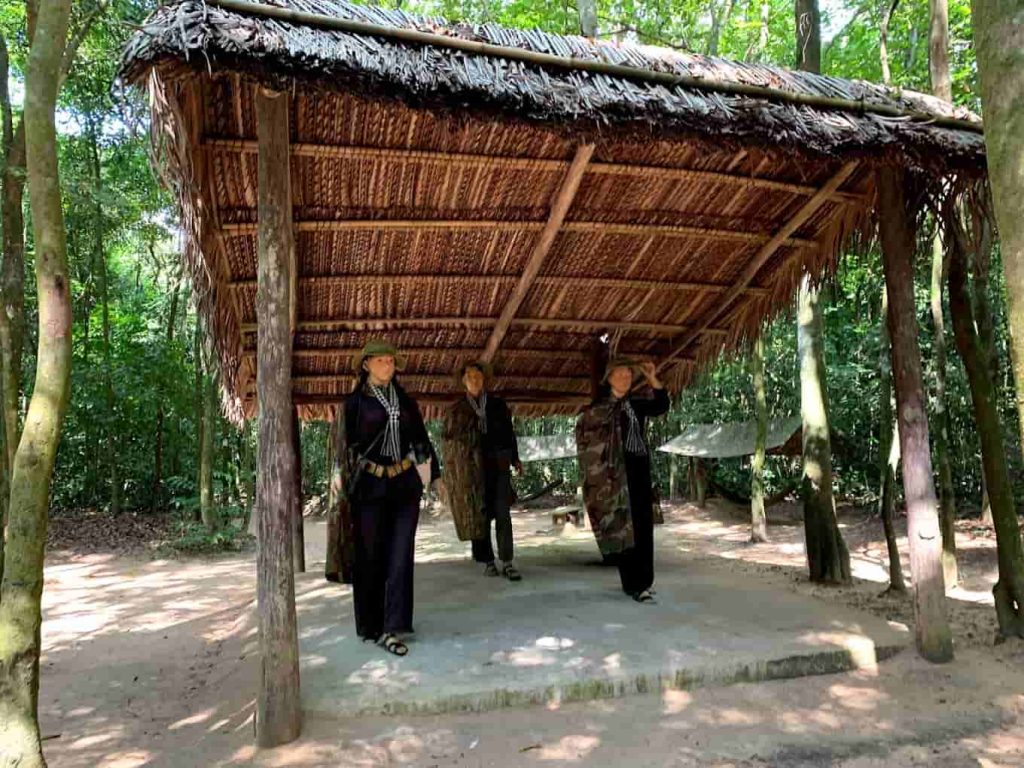
- Address: Located on Provincial Road 15, Phu Hiep Hamlet, Phu My Hung Commune, Cu Chi District, Ho Chi Minh City
- Entrance fee: 20,000 VND for Vietnamese visitors, 110,000 VND for foreign visitors
Binh Quoi Village Tourism Area
Viet Tre Village is an eco-tourism destination located just about 8 km from the center of Saigon. With its ideal location, it has become a popular choice for weekend getaways, particularly among the youth. This is a complex that offers various services such as buffets, traditional huts, Hoa Mua guesthouses, and family guesthouses.
When you step into this space with a strong Southern Vietnam riverside atmosphere, you’ll encounter familiar scenes such as bamboo water wheels, three-leafed boats, monkey bridges, creating a unique and charming beauty. In this tourist area, there are services for river cruises, rowing boats, fishing, various playground activities, rope swings, and clay sculpting. Many wonderful photos have also been taken here.
- Address: 1147 Binh Quoi, Ward 28, Binh Thanh District
Top Tourist Destinations in Ho Chi Minh City for Young People to Check-In
Art in Us 3D Art Museum
Do you want to visit a place that guarantees leaving you with many impressions? The 3D Art in Us Museum will bring you just that. This museum contains a virtual world beyond your imagination. It has 9 zones with 9 different themes, ranging from landscapes, animals, art masterpieces, fantasy, peculiar houses, to love, all realistically painted, enchanting visitors with an opportunity to unleash their creativity.
For the first time, you will have the chance to see stunning 3D paintings created by foreign artists. After a tour, you can create numerous unique poses to take lively photos with friends and family and enjoy a fun and relaxing day.
- Address: 02-04, Street No. 9, KDC Himlam, Tan Hung Ward, District 7
- Ticket Price: 200,000 VND per person
Beer Alley: Lost in HongKong
This place is essentially a well-known entertainment spot in District 1, but it’s sought after by the youth for its movie-like “Instagrammable” backgrounds. This alley features a main concept of the vibrant streets of Hong Kong, adorned with LED lights, neon signs, red lanterns, and posters, creating a strong cinematic vibe and plenty of check-in corners to get some artsy shots.
You can enjoy various delicious beer options, and the prices are relatively budget-friendly. Plus, it’s conveniently located near Bui Vien Street, so it’s a great opportunity for you to have a blast.
- Address: 175/19 Pham Ngu Lao, District 1 (close to Bui Vien Street)
- Opening Hours: 3:00 PM – 5:00 AM
Nguyen Van Binh Street of Books
Another must-visit check-in spot when traveling to Saigon is Nguyen Van Binh Street of Books. It not only attracts young people to buy books but also serves as a familiar meeting place on weekends for picturesque Instagram photos.
Located right next to the Notre-Dame Cathedral Basilica of Saigon, Nguyen Van Binh Street of Books is constructed with an open space that allows visitors to freely explore and appreciate Vietnamese reading culture. Even though it’s only 100 meters long, the compact book stalls feature a charming, unique style, with lush greenery providing a beautiful backdrop for Instagram-worthy shots. So if you want to capture photos that garner thousands of likes, don’t miss this location!
- Address: Nguyen Van Binh Street, Ben Nghe, District 1
- Opening Hours: 8:00 AM – 10:00 PM
Landmark 81 Saigon
Operational since 2018, Landmark 81 continues to be a tourist attraction in Ho Chi Minh City. It’s a skyscraper part of the Vinhomes Central Park complex and is famously known as the tallest building in Vietnam. Landmark 81 is also one of the popular destinations for taking pictures among young people.
There are various stunning spots to capture memorable photos. The most prominent one is the observation deck with sparkling glass windows. In addition, the pedestrian bridge to Landmark 81 Park and the underground parking gate, as well as the gigantic arch near Starbucks, are all cool Instagram-worthy locations.
- Address: Vinhomes Central Park, 208 Nguyen Huu Canh Street, Ward 22, Binh Thanh District
- Ticket Price: Free Admission
Ho Chi Minh City is not just about stopovers; this luxurious and vibrant land has many places you must visit at least a few times to discover fully. I hope that with the top tourist destinations in Ho Chi Minh City listed by Danang Private Car’s here, you will have a memorable and enjoyable visit to the city of Ho Chi Minh.


